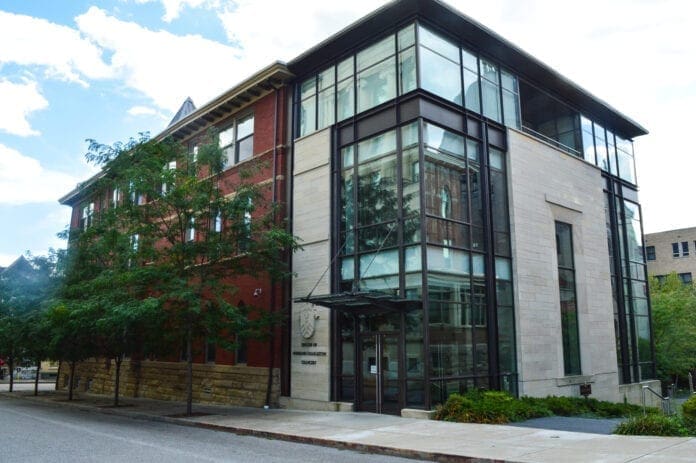Catholic school students in West Virginia have scored above national averages on assessments proving the disruptions of the COVID-19 pandemic did not hold them back.
West Virginia’s superintendent of Catholic schools, Mary Ann Deschaine, said the flexibility and compassion of her educators significantly reduced the possibility of any measured disruption in learning. The Catholic schools in West Virginia remained open in 2020-2021 with a traditional five-day-a-week in-person schedule unless the state-mandated schools across the state to close.
She said the school system’s through-year assessments were key to identifying whether student skill levels were at, above, or below grade level norms.
Typically, the schools within the diocese conduct assessments three times- Fall, Winter and Spring. Even during the pandemic students were able to complete the test at least twice – Fall and Spring. The tests are administered to all students in grades K-10 in the areas of reading, language arts and math. Additionally, students in grades 5th and 8th also take a science component.
“With multiple assessments conducted during the year teachers obtain reliable information, measuring individual student growth and needs from Fall to Spring,” she said. “Specific skill levels are tested to identify the point of growth and productive opportunities, and to address, narrow, and eliminate any gaps during the year. This method provides our teachers valuable information they can use to adapt and improve instruction during the school year and at the start of the following school year.”
The diocesan schools partner with the Northwest Evaluation Association (NWEA) for their state-aligned, online Measure of Academic Progress (MAP) assessments.
The NWEA tests are adaptive, meaning students are measured where they are across grade levels instead of just at their grade level. The online test adjusts during the assessment based on the student’s right or wrong answers. A right answer challenges the student to a harder question. A wrong answer bumps down a level to identify where the student’s ability is in the subject area, resulting in an identification marker of what the child’s needs may be to grow in this subject area. The teacher then can adapt their lesson plan to help the student attain individual goals, grade level goals, and cross grade-level goals.
“We are not only measuring but also accelerating learning,” Deschaine said. “There are so many milestones between grades, and we want to celebrate them all. A most significant one is in second and third grade, when a child goes from learning to read to reading to learn. It is through these concentrated and intentional assessments that we determine if our second and third graders are hitting timely benchmarked reading goals, so they are best equipped to succeed at the next level.”
Being able to track learning throughout the year, as well as from year to year, is critical to developing and implementing effective teaching and learning strategies designed for each student, according to Associate Superintendent, Jennifer Hornyak. Additionally, the assessment provides each student and family a roadmap for them to build on strengths, remove roadblocks, and concentrate on growth.
“Because of our high expectations for academic excellence, we like to set our measuring stick of success to ensure that our students are on the path for college and career readiness even at a very young age,” Hornyak said. “When looking at the Spring 2021 diocesan data, all of the grade levels (across the whole diocese) for reading and language arts were above national averages and at or above the college/career readiness goal. Diocesan math scores were all above national averages, but just shy of making the loftier college/career level readiness goal at grades 2-6. Therefore, especially in those grade levels, math is an area we want to strengthen in the coming school years.”
The pandemic was indeed demanding on the school system, but also reinforcing, bringing out the best in the teachers.
“I am so proud of the students and teachers,” she said. “It was a very difficult year with fluctuations between in-person learning, remote, and hybrid learning situations. I think our students made remarkable progress proving that learning continued to happen even in difficult and ever-changing situations. Moving into the upcoming school year, we know we can continue to move mountains.”
Like Deschaine, Hornyak credits the classroom teachers for the overall Catholic school system’s success.
“Our teachers are the cornerstone of our Catholic schools, and their dedication to their students is inspiring to all,” Hornyak said. “We thank them for continually demonstrating that they are lifelong learners through involvement in professional development opportunities and always looking for new ways to improve teaching and learning in our schools. Our teachers are motivated to discover new ways to engage students in the learning process and promote a growth mindset in our school communities.”
“We are committed to providing a quality education in an unapologetically Catholic, Christ-centered environment,” Deschaine said. “That is our strong foundation, and it will never change.”


